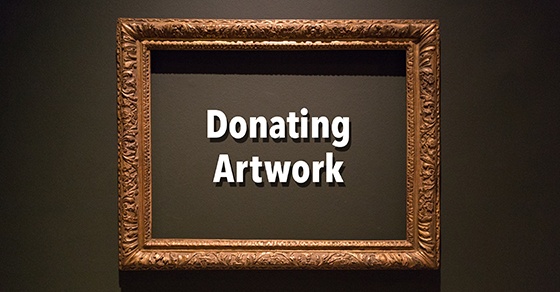
Published on September 25, 2017 by SmolenPlevy
Charitable giving is a key part of estate planning for many people. If you’re among them and own valuable works of art, they may be ideal candidates for charitable donations during your life.
Generally, it’s advantageous to donate appreciated property because, in addition to gaining a valuable tax deduction, you can avoid capital gains taxes. Because the top capital gains rate for art and other “collectibles” is 28%, plus state income taxes, donating art can be particularly effective.
5 tax-saving tips
If you’re considering donating art, here are five tips that can help you maximize your tax savings:
Obtain an appraisal
Most art donations require a “qualified appraisal” by a “qualified appraiser.” IRS rules contain detailed requirements about the qualifications an appraiser must possess and the contents of an appraisal. IRS auditors are required to refer all gifts of art valued at $50,000 or more to the IRS Art Advisory Panel. The panel’s findings are the IRS’s official position on the art’s value, so it’s critical to provide a solid appraisal to support your valuation. There is also a procedure to obtain a Statement of Value from the IRS.
Donate to a public charity
To maximize your charitable deduction, donate artwork to a public charity, such as a museum or university with public charity status. These donations generally entitle you to deduct the artwork’s full fair market value (provided the related-use rule is also satisfied). If you donate art to a private foundation, your deduction will be limited to your cost. There are also percentage limitations on your deduction based upon your adjusted gross income (AGI), which in the best of circumstance is deduction up to 50% of your AGI.
Understand the related-use rule
For you to qualify for a full fair-market-value deduction, the charity’s use of the donated artwork must be related to its tax-exempt purpose. So, for example, if you donate a painting to a museum for display or to a university for use in art history research, you’ll satisfy the related-use rule. But if you donate it to, say, an animal shelter to auction off at its fundraising event, you won’t satisfy the rule and your deduction may be limited to your cost basis.
Transfer the copyright
If you own both the work of art and the copyright to the work, you must assign the copyright to the charity to qualify for a charitable deduction.
Consider a fractional donation
If you’re not ready to give up your artwork but are willing to part with it temporarily, consider donating a fractional interest. This allows you to generate tax savings while continuing to enjoy your art for part of the year. For example, if you donate a 25% interest in your art collection to a museum, the museum receives the right to display the collection for three months of each year. You deduct 25% of the collection’s fair market value immediately and continue to display the art in your home for nine months of each year.
Leave it to the professionals
The rules surrounding donations of art are complex. We can help you achieve your charitable goals while maximizing your tax benefits whether you wish to donate artwork or other valuables.





